That’s how most teachers managing the hybrid model, and kids still learning online, will describe their circumstance. Is it time to vaccinate our children and send them back to where they belong?
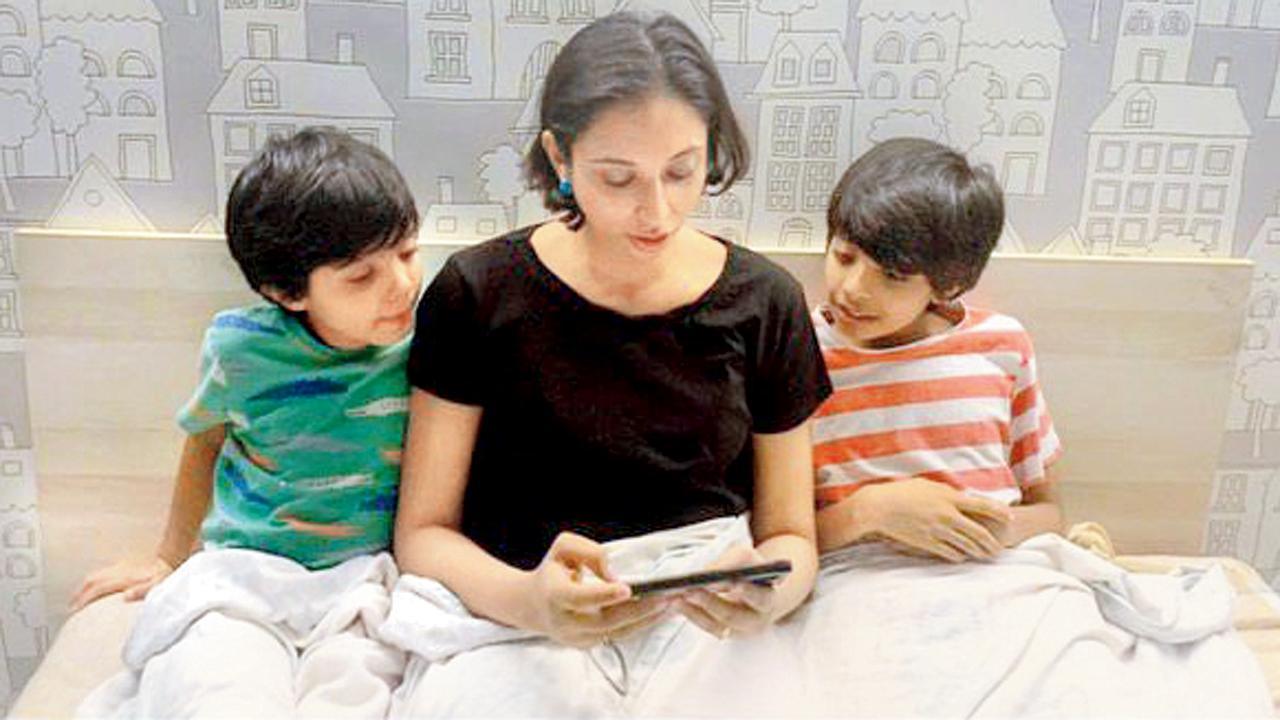
Initially reluctant, Juhu resident Shreedevi Sunil finally decided to let her older son return to class last week after she gave the decision time and thought
Last Thursday, school WhatsApp groups were buzzing with emotions ranging from rage and anxiety to confusion and in some cases, like this writer’s, a secret relief. At the State Cabinet meeting, the Maharashtra government announced that schools for classes I to IV in rural areas and classes I to VII in urban areas will restart from December 1.
ADVERTISEMENT
Development paediatrician Samir Dalwai thinks the decision is perfectly timed, backed by science. “The government has looked into an analysis report presented by the paediatric state COVID task force and hence, this is a welcome decision. Higher classes have been running smoothly and we have seen no spike in cases linked to the restarting. Fortunately, even post-Diwali, the infection case numbers haven’t gone up. Now, it is up to the schools and parents to work in tandem to ensure that the back to school move is a success for all.”
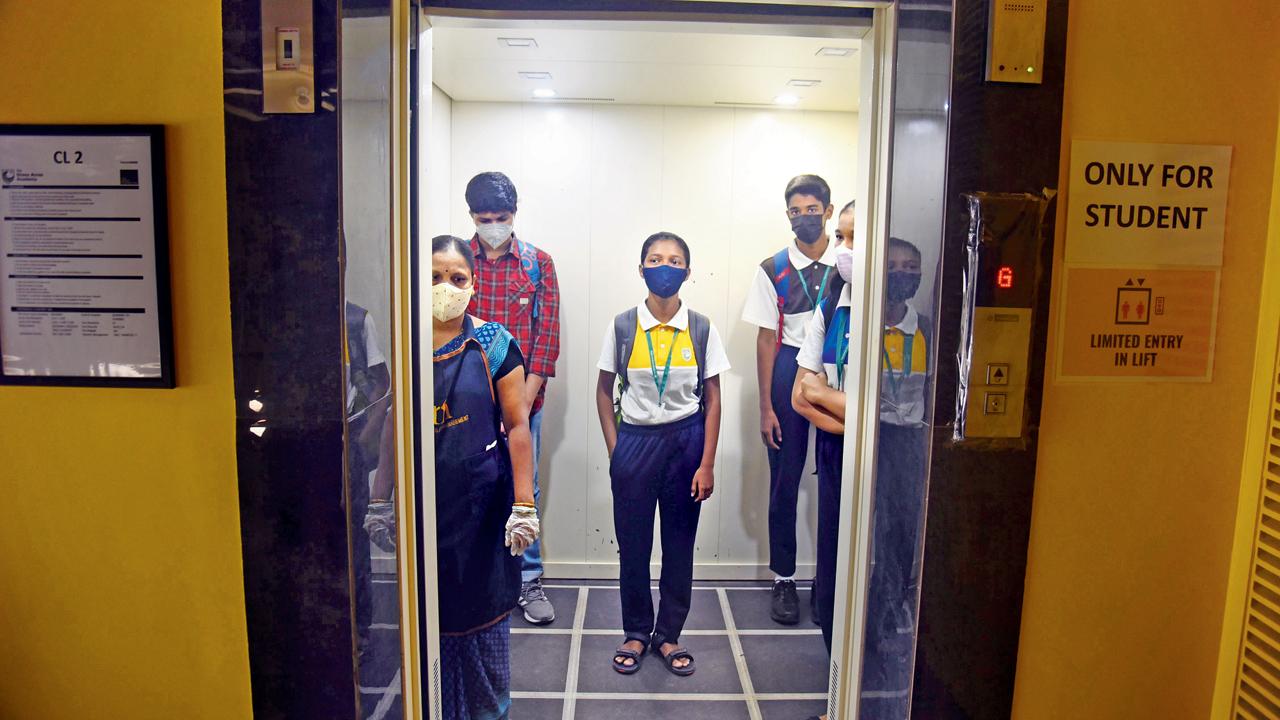 At Chembur’s The Green Acres Academy, class IX has seen 37.9 per cent students attend offline classes; while for class X, the number is 32.18 per cent. Principal Bonny Bhansali says the reason cited by parents is that the children are not vaccinated. Pic/Sameer Markande
At Chembur’s The Green Acres Academy, class IX has seen 37.9 per cent students attend offline classes; while for class X, the number is 32.18 per cent. Principal Bonny Bhansali says the reason cited by parents is that the children are not vaccinated. Pic/Sameer Markande
For classes IX, X, XI and XII, Maharashtra’s schools reopened in October and yet, some parents continue to remain apprehensive to send their kids to school. Most schools are following a hybrid model where online and offline classes are conducted simultaneously, thus offering parents and children a choice. The number of students attending offline classes in Mumbai continues however, to be low. At Chembur’s The Green Acres Academy, class IX has seen only 37.9 per cent of students attending offline classes; while for class X, the number is 32.18 per cent.
Principal Bonny Bhansali tells mid-day that the reason cited by parents is that the children are not vaccinated. Some also state that the kids are yet to return from their hometowns. She explains, “The school has been following all safety protocols as per government guidelines, including wearing of masks, social distancing, and sanitising the premises twice daily. We conduct temperature checks of all staff members and students. This, along with the academic plan and schedules, have been shared with the parents. So far, the response from those attending physical classes has been extremely positive. We also invited the PTA members for a school tour before the students returned to school. Day-to-day queries can always be addressed via Google Classroom.”
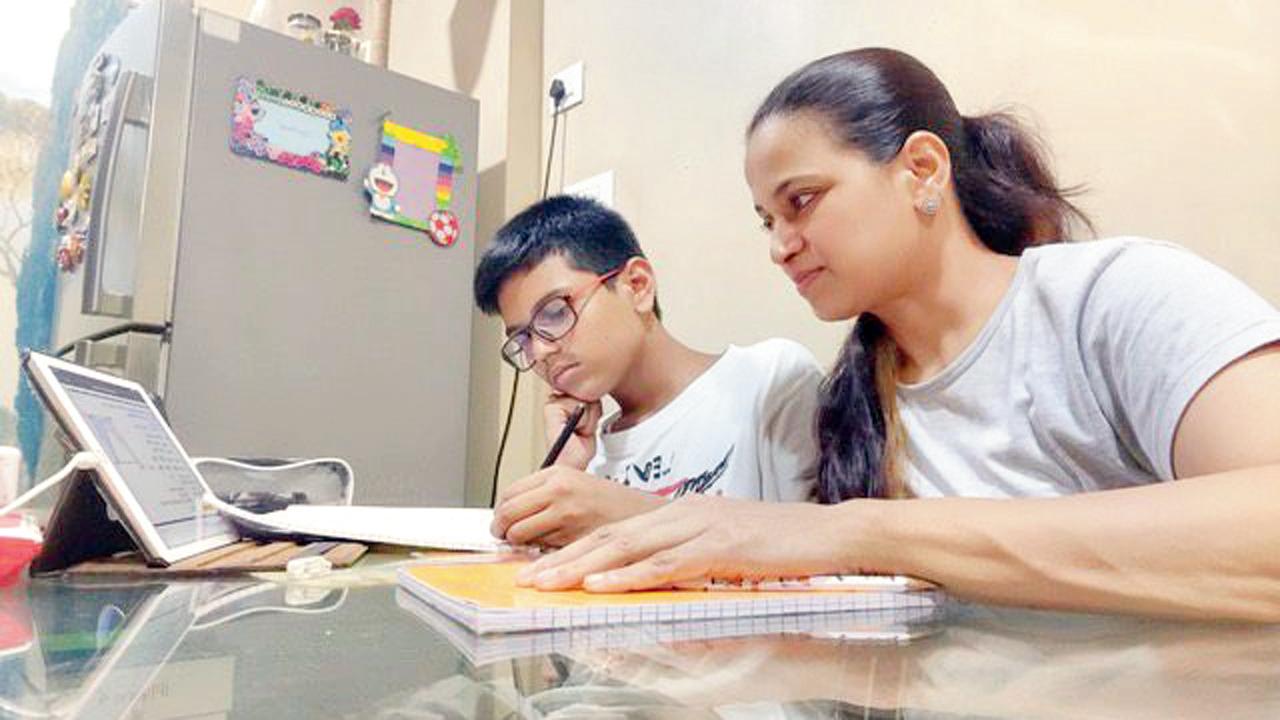
Pranshu Dhotre, 14, returned to offline school on October 12. His mother Sheetal says she was keen to see how he’d adapt to after-COVID life
Pranshu Dhotre, 14 , a class IX student of Orion ICSE in Vile Parle East, returned to offline school from October 12. In his class of 33, only 16 come to class; the remaining continue to learn online. His mother, a pre-primary teacher decided to send him to school since everyone at home was fully vaccinated. “Taking into account the loss of the experience of the physical environment of a school and normal life interaction with peers, I grabbed the first opportunity to send him to school. Unless, as a parent, I don’t expose him to after-COVID life, how will I know whether he has the immunity and strength to cope, both physically or emotionally? With online school, more than permissible levels of screen time was allowed and we all know how that led to addiction,” she says.
Juhu resident Shreedevi Sunil admits that she was reluctant to send Vedant, her older son, to offline school. “I feared that they’d contract the infection. How strictly will kids adhere to protocols? However, after giving it some time and thought, we, the family, realised that all adults in our family had contracted COVID at some point since the first lockdown despite being so careful. Data shows that children aren’t getting as affected, so we decided to send them to school last week. The attention span in online class was dwindling and being an educationist myself, I understood that not everyone has the skill set to teach children. It was in their best interest to return to school. I thought it best to adapt instead of resist,” she adds.
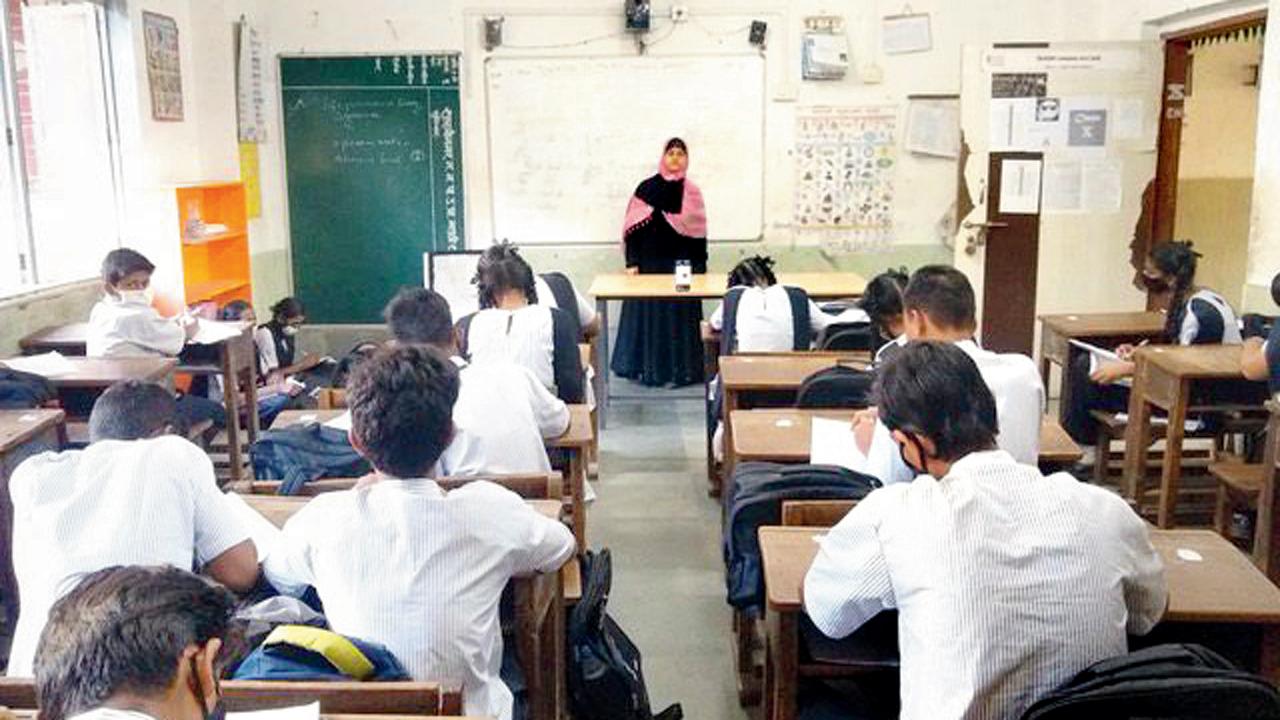 A teacher holds a full class at a BMC school in Shastri Nagar. Most kids here can’t afford a mobile or data bills
A teacher holds a full class at a BMC school in Shastri Nagar. Most kids here can’t afford a mobile or data bills
Swapnaja Mathure’s daughter Saana who is in class X is glad that the school hasn’t made it mandatory for all. However, she feels that since the board exam finals are just a few months away, it would have been better if she was attending offline school. “Doubts are best covered in person. Having said that, I am also scared to send her to school, lest there is another wave,” says the Thane resident.
Natasha Vaidya Karkhanis, a class nine teacher at Universal High School in Thane, says that most parents are continuing to exercise caution. In a class of 33, only about eight students are attending offline school. “The most common and legitimate reason cited by parents is absence of school transport and/or vaccine for children. Some want to wait till January and take an informed decision. While the hybrid model works for higher classes, as more and more students join offline class, it may get cumbersome for the teacher to focus on offline as well as online students simultaneously.” Universal has invested considerable time and energy to train the teachers on ensuring safety protocols and managing to teach via the hybrid model. Every teacher has to personally inspect the sanitisation process in each class to avoid a lapse.
In civic-run schools, things are different. While offline attendance isn’t mandatory, more than 90 per cent of students have joined physical class. Swapnil Jagtap, Acting HM of Shastri Nagar BMC school, tells mid-day that most parents agree that if kids are now going to parks and public places, why not school? “They trust the school to follow protocol. We conduct spot checks, reducing the chance of lapses. These students come from homes that can barely afford a mobile phone or pay data bills. Only those who have gone to their hometown during the lockdown or have an unwell member at home aren’t attending class. Our teachers conduct special online classes for them. In some exceptions, they even go to their homes to teach. Besides, the State-level lectures, available on YouTube, are making understanding difficult concepts easier. The idea is to make education accessible and convenient for all,” he adds.
While most private schools are following the hybrid model which hinges on choice and consent, observers say that a downside is that kids who have opted for online class are feeling left out. “It can be hard for parents to explain why they aren’t attending school while their classmates are,” Dhotre says. Bhansali adds that it is important to recognise that educators around the world have expressed the fact that hybrid education has been very challenging for both, teachers and students. “We feel that the government should extend teaching hours for physical school and vaccination should be provided to students at the earliest, especially high school kids, if it is now safe to do so.”
Having said that, when children are denied access to daily interaction with their classmates and recreational activities, their mental health can take a hit. In preschoolers, peer interaction helps them learn the social skills required for social connections. Isolated grade-schoolers are more likely to turn to their devices, risking screen addiction instead of healthy peer relationships. Increased screen time leads to poor sleep habits, a rise in anxiety and over-exposure to social media, all of which could make a chld depressive.
Many like Dhotre believe that vaccination for children is the only solution to restore complete normalcy. “You can’t trust small children to follow safety norms. But making physical attendance compulsory will only make the parents more anxious. Instead, assurance from the institution to promote standard operating procedures for COVID, access to medical (COVID-trained medicals) on the premises and sanitisation will encourage them to send their children to school. Also, institutions must take up free inoculation drives for their students.”
Dalwai warns that once school starts for all classes, teachers and parents may notice social anxiety among children, similar to what was observed in some adults when they returned to office after 20 months. “For close to two years, they have been subject to increased screen time and we will see the repercussions when they are out in the real world. Grade 1 students may need more time to adjust to a full day’s school and some may be reluctant to mix or participate. Some may cry even. But remember, that children are a resilient lot. They learn quickly. Give them two weeks’ time; however, if you notice a repeated pattern, consult a professional. This is the time for parents and teachers to support each other and make sure that ‘marks’ and ‘rank’ are not stressed on. You cannot expect learning worth two years to be completed in two months. Work on building their confidence instead. Show them love and let them blossom.”
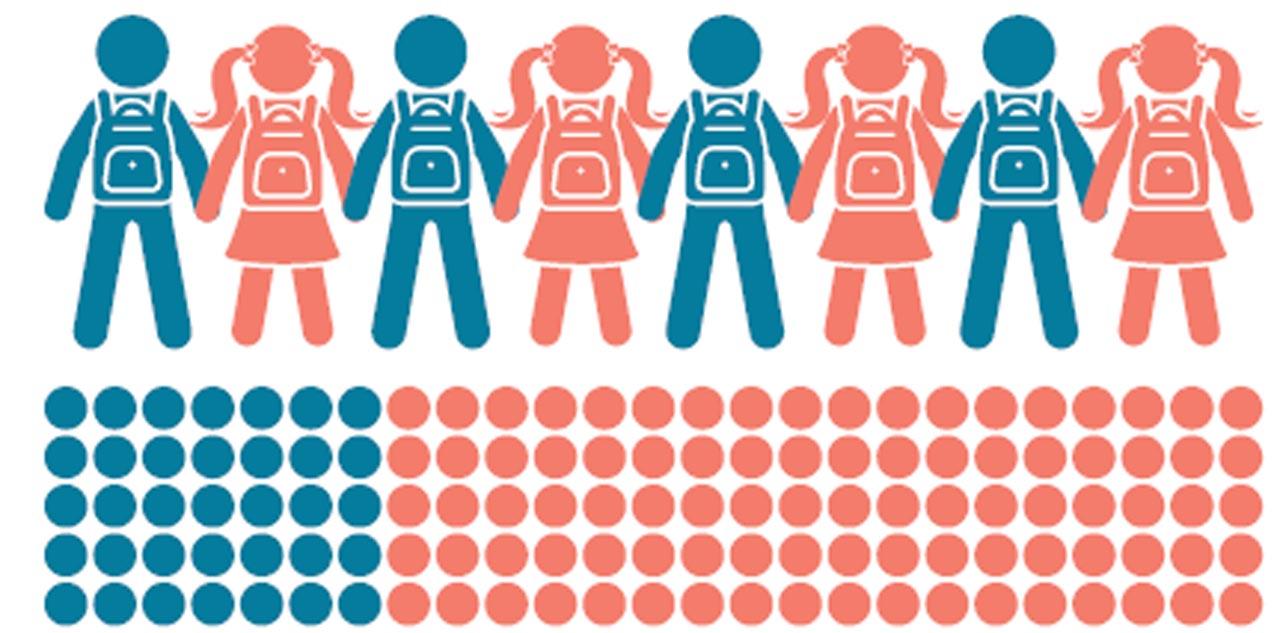
35-90 per cent
Approximate ratio of kids in private schools Vs public schools who’ve opted to return to physical class
 Subscribe today by clicking the link and stay updated with the latest news!" Click here!
Subscribe today by clicking the link and stay updated with the latest news!" Click here!







